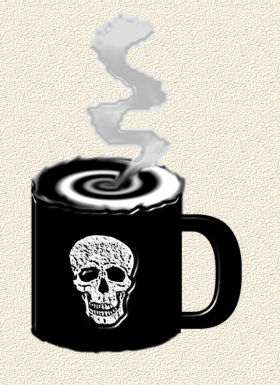ARP Makes Progress
 Cedar: The Alternate Reality Project, headed by William Posey IV, has issued a statement to this magazine that progress is being made into the nature of extrasensory perception. And tea may be part of the answer.
Cedar: The Alternate Reality Project, headed by William Posey IV, has issued a statement to this magazine that progress is being made into the nature of extrasensory perception. And tea may be part of the answer.
"Tea contains several useful drugs that we are utilizing in our research," explains Posey. "The first of which is caffeine. The other is theophylline, which, like caffeine, is a part of the xanthine group of stimulants."
Posey explains that the breakthrough came late last month, and was aided by a variant of the mushroom A. muscaria. "We had been trying to experiment with the chemical makeup of the xanthines for some time. After all, we know that stimulants have profound psychological effects, including insomnia, depression and mood swings. I do not have time to go into detail here, but suffice it to say that by using a bath of methylene chloride and other chemicals, we were able to extract theophylline from tea leaves in such a way that briefly they interacted with the mushroom to form a new xanthine. Our best minds are still trying to figure out exactly why that happened."
Promising to publish the ARP's methods in a scientific journal, Posey goes on to describe the properties of this new substance. "A single tenth of a gram of this new substance, which we are currently calling I-Gazi 1, has an effect on the body that resembles ten or twelve cups of coffee. At this dosage, the subject experiences "coffee jitters" as well as, to some degree, heightened senses. It is when the dosage is doubled that we begin to see truly spectacular results. Here, the subject's senses are so acute that he or she can actually distinguish clearly between 30 and 31 decibels of sound. Hearing is better, too. One of our subjects was able to hear conversations from 100 feet away---behind two closed doors."
As exciting as this research sounds, Posey notes that there has been some trouble. At higher levels of dosage, he says, subjects become jittery to the point of paranoia, and begin to hear voices and see shadows of things that are not there. This phase passes quickly, in about ten or fifteen minutes, but it is long enough to scare some subjects away from the study. Posey believes that these voices and shadows may not be hallucinations, however, and may actually be evidence of remote viewing, or perhaps even a glimpse into the world of the dead.
Back to this Issue Contents
